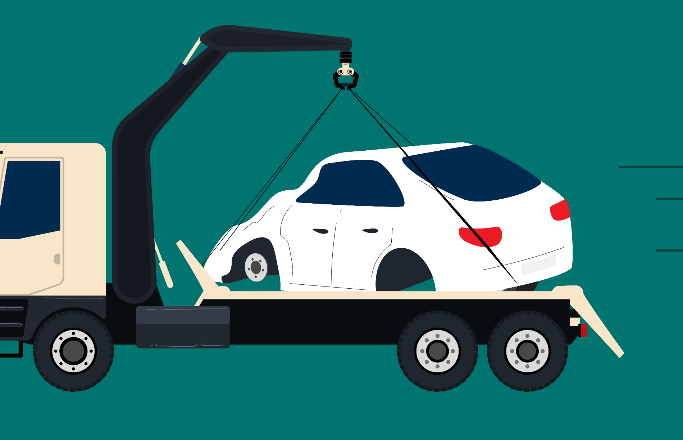How to Prepare Your Vehicle for the Car Removal Process in 2024?

When the time comes to say goodbye to your beloved vehicle, knowing how to prepare it for removal can save you a load of hassle. Whether for extra cash, environmental reasons, or simply clearing up some garage space, ensuring your car is ready for removal is crucial.
In this detailed guide, we will delve into the ins and outs of the car removal process and provide the necessary steps to prepare your vehicle.
Collect All Valuables and Personal Items
Before the car removal Auckland team arrives, you must ensure that all personal belongings have been removed from your vehicle. Over the years, cars have become like secondary homes where we tend to leave many items of sentimental or practical value.
Check all the usual spots – glove compartments, door pockets, under the seats, and trunk. Also, don’t forget to look in less obvious places such as visor compartments, underneath floor mats, or any aftermarket car additions.
Clearing out your car is not only important for retaining valuables but also for privacy protection. Once your car is taken for removal, retrieving personal items can be difficult, if not impossible, so a thorough sweep is definitely in order.
Cancel Any Active Subscriptions or Services
Today’s Vehicles often come with various subscriptions and services, such as satellite radio, GPS navigation aids, or connected vehicle services. Before handing over your car for removal, cancel all active subscriptions to avoid recurring charges.
In addition to subscriptions, you might have prepaid for services like toll passes, parking permits, or maintenance packages. Each service provider will have a different cancellation policy; some may offer partial refunds.
Ensure all services are canceled and associated devices or stickers are removed from the vehicle to prevent misuse or extra charges. Remember to document these cancellations for your records.
Take Care of the Documentation
Making sure that all your paperwork is in order before the removal service arrives is just as important as physically preparing your car. This includes locating and organizing the vehicle’s title, registration, and service records.
The title is crucial, as it legally transfers ownership and allows the removal company to proceed without complication. If your title is missing or damaged, contact your local DMV as soon as possible to obtain a duplicate.
Keep the vehicle record for personal reference, as it may come in handy for tax purposes. Also, remove the license plates before the car is towed and return them to your DMV if required.
Opt for Vehicle Assessment
Assessing the state of your vehicle before removal is invaluable. This step isn’t just about knowing what parts of the car are still operational but also about providing an accurate description to the removal company. A preliminary assessment could range from documenting existing damage to determining if the engine starts or if any parts have been recently replaced.
Take photographs from various angles to have a visual record of your vehicle’s condition. Prepare a written account detailing any known issues, recent repairs, or upgrades you’ve made. This information can be useful for getting a fair estimate and for personal records or future reference if needed.
When assessing your vehicle, also consider the market value of its parts. Some components may be more valuable when sold separately, especially for popular or rare models. This step can potentially increase your total value from the car removal process.
Empty All Fluids and Gas from the Vehicle
One crucial step often overlooked when preparing a car for removal is emptying all fluids and gas from the vehicle. While this may seem obvious, many people forget to do it in the chaos of saying goodbye to their car.
Start by draining the engine oil, transmission fluid, coolant, brake fluid, and windshield wiper fluid. Dispose of these fluids properly, as they are considered hazardous waste and cannot be thrown away with regular garbage.
Next, remove any remaining gas from the tank. You can do this by siphoning it manually or taking the car for a short drive to use up the gas. Make sure to run the engine until it stalls completely before removing any fuel lines or disconnecting the battery.
Look for Reliable Car Removal Services
Selecting a trustworthy car removal service is a significant step when preparing your vehicle for removal. Do your research and choose a company with a good reputation, transparent pricing, and proper licensing. Consider getting quotes from multiple companies to ensure you get the best deal.
When considering your options, look for services with positive online reviews, transparent pricing, and the necessary certifications. If you’re in New Zealand, searching for ‘car removal Auckland’ will yield a list of local providers equipped to service your area.
Verify the company’s policy on vehicle pick-up – will they tow your car for free, or is there a charge? Do they handle all the paperwork, ensuring a hassle-free process? These considerations will lead you to a reliable service that will take care of your vehicle ethically and legally, marking the end of your car’s journey with respect and ease.
Scheduling the Pick-up
Once you’ve chosen a car removal service, the next step is to arrange the pick-up at a convenient time. Confirm the date, time, and location directly with the company to avoid any confusion. Selecting a timeframe within their operating hours is a good idea to ensure the pick-up process goes smoothly.
Also, ensure you’re present during the scheduled pick-up to formally hand over your vehicle unless prior arrangements have been made with the service provider. Some companies may offer after-hours pick-up options that can accommodate your schedule. If necessary, request a call ahead to have a precise arrival time.
If your schedule is hectic, and you cannot be present, delegate someone you trust to handle the transaction on your behalf. Ensure they have all the necessary documentation and instructions to avoid any delays or issues. Obtain a receipt or a bill of lading as proof of the transfer and for your records.




